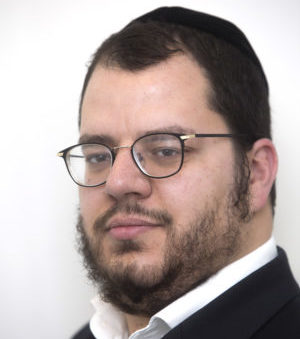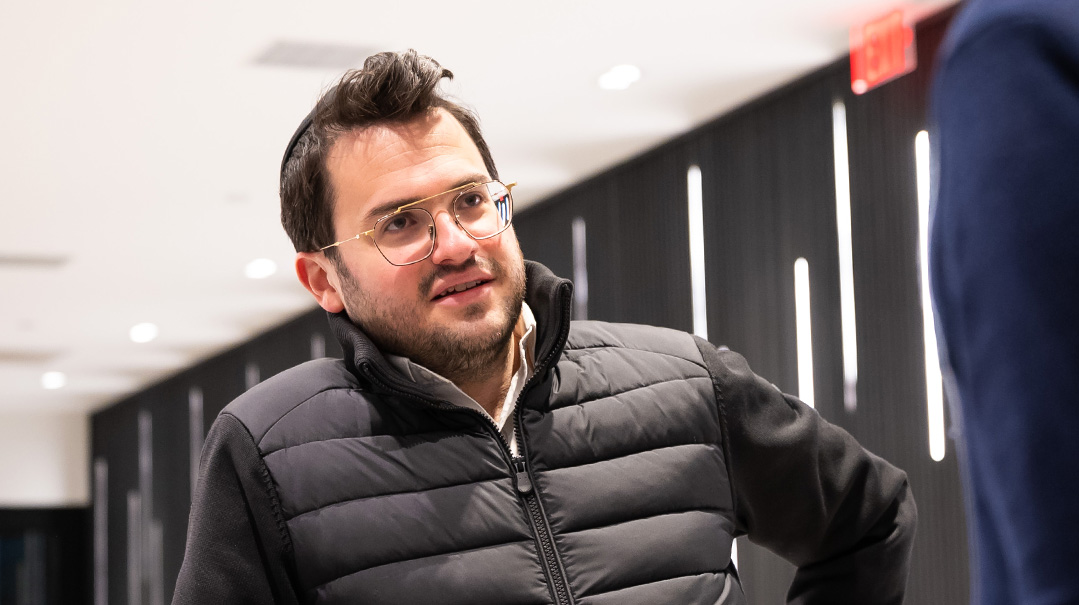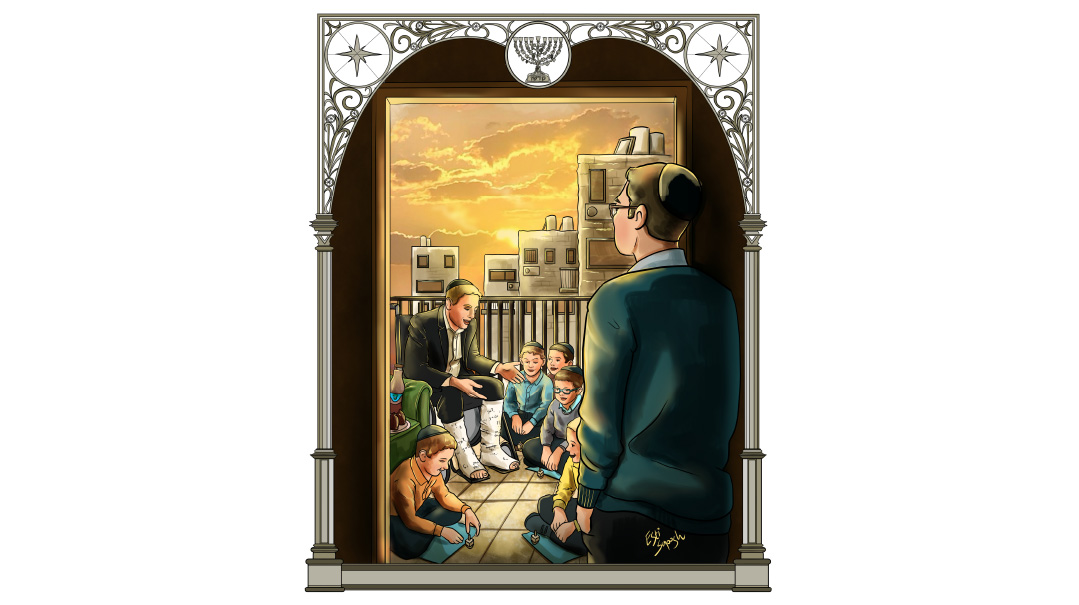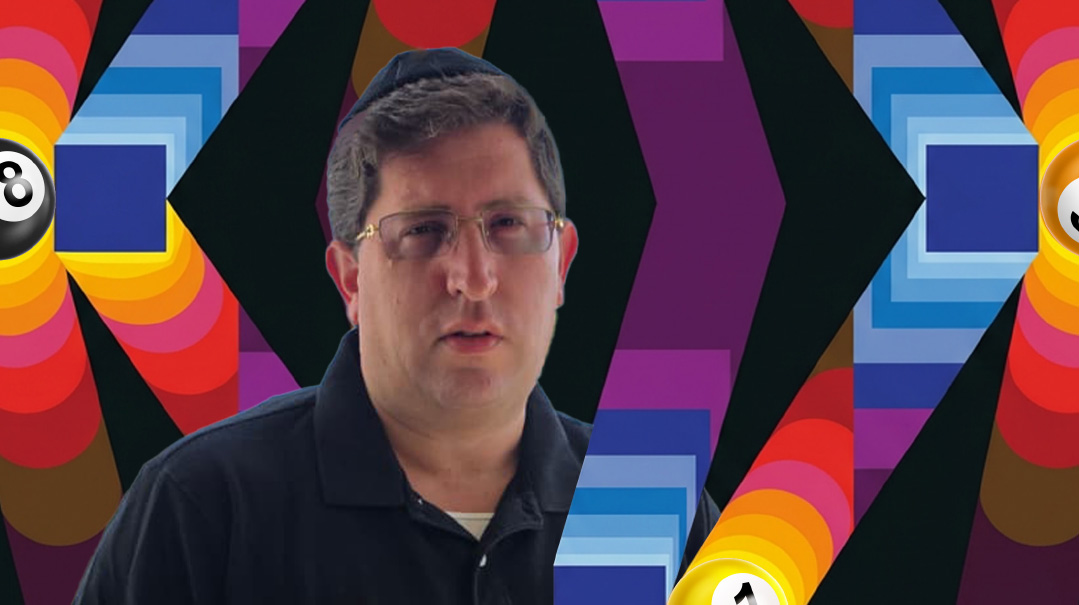Gate to Heaven

We were given an exalted task in this world, one that affects the worlds above us. When we do things in a Kabbalistic way, our actions look the same, but our intents are much deeper.

As I walk into a little room on the first floor of Yeshivas Shaar Hashamayim on this cool Jerusalem night, the first thing I hear is the sound of jangling coins. Looking around, I spot Rosh Yeshivah Rav Reuven Gross, who has invited me to enter this hundred-year-old sanctuary of Kabbalah; he’s surrounded by a minyan of elderly men, sitting in utter silence as they wait for him to continue. Rav Gross is now pronouncing various combinations of Divine Names to the accompaniment of those rattling silver coins — American silver dollars minted in the 1960s — putting down a coin for each Name. First are the Names of judgment, then the Names of mercy, and finally the names of two critically ill people who are the subject of their prayers. A tiny slip of paper is passed around, and when the coins corresponding to all the sacred Names have been put down, the mekubalim begin davening for the two patients from a pile of yellowed pages filled with combinations of Divine Names and supplications from other worlds.
Once the pidyon hanefesh ceremony concludes, Rav Gross, who leads the yeshivah together with Rav Yaakov Meir Schechter and Rav Gamliel Rabinowitz, is happy to talk about it — although he stresses that this is not what the yeshivah is all about. If someone is looking for a house of amulets, incantations, and mysticism, 71 Rashi Street isn’t the right address.
Still, there is a tradition, and Rav Gross explains the process. “When a person is deathly ill,” he says, gently introducing me to the world of mysticism, “the tzelem Elokim within him departs. In Sefer Tehillim, the pasuk says, ‘Only with the tzelem will man walk.’ In other words, the tzelem Elokim of a person is what holds his neshamah inside his body. The tzelem is what makes it possible for a person to live. A person who is ill must be given a new tzelem, in order to spare him from death. The Rashash [Rav Sar Shalom Sharabi ztz”l, an 18th century kabbalist and one of the greatest experts in kavanos (meditations)] revealed this tikkun, which is performed with 160 silver coins, since the gematria of the word ‘tzelem’ is equivalent to that of ‘kesef’ [silver]. Through tzedakah, which saves a person from death, the ill person receives a new tzelem and can continue living.”
The Rosh Yeshivah details the procedure: “First I recite the Names of judgment, and then I pronounce the Names of mercy. Thus, we ‘sweeten’ the judgment of the person who is ill, changing his fate from one of strict judgment to one of mercy. Through the mercy, he is cured.”
The Rosh Yeshivah, evasive about the success of this “treatment,” says he knows of one case where a comatose patient woke up. But later, an elder talmid at Shaar Hashamayim pulls me aside and whispers, “The Rosh Yeshivah is very modest, and he hasn’t told you everything. We’ve clearly seen wonders here, how people have been extricated from very difficult situations.”
The pidyon costs about NIS 800. The mekubalim who participate in the procedure receive NIS 20 for each name.
“The Rosh Yeshivah doesn’t usually perform tikkunim,” the talmid explains after Rav Gross makes his way upstairs to the main beis medrash. “He always stresses that the main parts of Kabbalah are its study and the special kavanos in davening. But the yeshivah has a history of performing tikkunim, pidyonei nefesh, and tikkunei almanah [a procedure from the Rashash for someone who wishes to marry a widow but is concerned that the deceased husband might resent the new marriage], so he occasionally continues these practices. He often jokes that he could open a stand at Kikar Shabbos and sell pidyonos from morning until night, but that is not our purpose. We are here to learn Kabbalah, not to perform miracles. Kabbalah and performing yeshuos are two different things, and believe it or not, these two areas never overlap.”
Unified in a Teacup
If you walk into Shaar Hashamayim’s beis medrash, you’ll likely find Rav Aharon Mordechai Rotner learning in solitude in the left corner. This unassuming man, one of the great Torah sages of Jerusalem, occasionally rises from his seat and makes his way to the tea station, where he prepares cups of tea for the other members of the group of mekubalim.
While it’s certainly beyond my comprehension, it seems that he infuses the preparation of the tea with sublime yichudim. In general, Rav Rotner drinks nothing but tea all year long, winter and summer. On Friday nights, after an exalted davening at the Kosel, he spends three hours learning the sefer Sidduro shel Shabbos together with his guests in his tiny apartment in Meah Shearim, and the group drinks nothing but tea. During the week, the only thing he eats is leftover challah from Shabbos. Every Friday, he stands next to the window and prepares fish in accordance with a certain mystical procedure, just as his rebbe, Rav Aharon of Belz ztz”l, used to do. Those in the know say there isn’t any part of the Torah with which he isn’t intimately familiar, yet whenever someone asks him a question about Kabbalah, he responds, “Nu, do you think I understand Kabbalah?”
The beis medrash in Shaar Hashamayim is open to anyone, but only those who are experts in the revealed portion of the Torah can come here to study nistar — the concealed parts. The other two criteria are that he be a person with a desire to elevate himself out of his worldly desires, and that he must have prior background in the study of Kabbalah. But, explains Rav Gross, “If a person is well-versed in chassidic works, then he will have the appropriate background and will be able to study Kabbalah here. Today, there are even yeshivah bochurim who have bekiyus in works of chassidus.”
If you don’t meet the criteria but Kabbalah still draws you, downstairs Rav Chaim Uri Brizel delivers a shiur on Otzar Hakavanos, “which is considered a major introductory work for anyone who wishes to learn nistar,” the Rosh Yeshivah says.
Whether or not the study of Kabbalah should be pursued by all Torah scholars or just a select few has been a discussion for centuries, but the Rosh Yeshivah explains that “even according to those who support general Kabbalah study, there are certain conditions that must be fulfilled first.” What kinds of conditions? “Well,” he continues, “If you learn Torah with deveikus, you will satisfy them. When Rav Chaim Leib Auerbach founded the yeshivah in 1906, he established a rule: Every hour of study of nistar has to be matched per hour with the study of Gemara and poskim. He didn’t want the yeshivahleit to be learning Kabbalah all day long.”
Dream Come True
Shaar Hashamayim’s beis medrash is a veritable who’s who of Jerusalem’s noted scholars, and I notice Rav Yitzchak Schwadron — son of the famous maggid of Jerusalem, Rav Shalom Schwadron — sitting in front of an open Gemara.
“You aren’t learning Kabbalah?” I ask in surprise.
“I don’t learn Kabbalah here,” he responds with a smile. Later I’m informed that Rav Yitzchak is actually one of the yeshivah’s Kabbalistic scholars, but he doesn’t learn it in public and is careful not to flaunt his study or knowledge of the subject.
Rav Yitzchak Schwadron is part of the yeshivah’s living history, carrying on the legacy of his grandfather Rav Chaim Yehudah Leib Auerbach (father of Rav Shlomo Zalman Auerbach), the yeshivah’s founder.
“It all began with an incredible dream,” Rav Yitzchok relates. “My grandfather was a young avreich when he had the dream. In it, the Arizal appeared to him and said, ‘Why don’t the Ashkenazic sages of Yerushalayim study nistar? Go and open a yeshivah for mekubalim.’ The dream repeated itself, and my grandfather was so shaken that he went to seek out his friend Rav Shimon Horowitz, one of the great mekubalim of Yerushalayim, to discuss the dream. As he was walking along in the cold of that winter night, who did he meet, but Rav Shimon himself — Rav Shimon had had the same dream! The Arizal appeared to him too, insisting that ‘My Torah has the ability to bring the Shechinah back to Yerushalayim from its exile,’ the Arizal told each of them in their dreams. (Only Yeshivat Beit E-l, a Kabbalah yeshivah for Sephardic chachamim, existed in the Old City at the time.)
“Although it was the middle of the night, the two decided to go to Rav Shmuel Salant, the rav of Yerushalayim at the time,” Rav Yitzchok continues. “Rav Shmuel instructed them to ask the gedolim of Poland whether it would be proper, and a sh’eilah was sent to both Rav Chaim Brisker and to the Chelkas Yoav; and both ruled that they were obligated to open the yeshivah immediately. My zeide and Rav Shimon Horowitz drank a l’chayim and then settled down to work. The Chelkas Yoav even sent his son-in-law, Rav Shlomo Kalisher, to learn in the yeshivah.”
The original building in Jerusalem’s Old City was ransacked in 1948 and the yeshivah was first reestablished in the Katamon neighborhood, then in the Beis Yisrael shtieblach; Rechov Rashbam, and finally Rechov Rashi — where it has served Jerusalem’s greatest mekubalim including Rav Eliyahu Dovid Slutkin, Rav Fishel Eisenbach, Rav Moshe Luria, and Rav Moshe Weber, as well as, ybdlch”t, Rav Yaakov Meir Schechter, Rav Reuven Gross, Rav Gamliel Rabinowitz, Rav Yitzchak Moshe Erlanger, Rav Aharon Mordechai Rotner, and the rest of its current distinguished complement of students.
Did Rav Shlomo Zalman study Kabbalah in his father’s yeshivah? “If he did, we’ll never know about it,” says Rav Yitzchak of his illustrious uncle. “That is the way Kabbalah is meant to be studied — in secret, without making an issue over it.”
Keep It Simple
Today the Kabbalah seder at Shaar Hashamayim begins at 3 p.m. The Rosh Yeshivah sits in the upstairs beis medrash with a group of scholars, learning the sefer Shaar Hakavanos of the Torah of Rav Yitzchak Luria — the Arizal — who unlocked the gates to the study of Kabbalah 450 years ago. Rav Gross began his own trek through Kabbalah in this yeshivah decades ago.
Rav Reuven originally came to Eretz Yisrael from war-torn Europe as a child, and became a talmid muvhak of Rav Aharon of Belz. He first learned in the yeshivah of Rav Yosef Tzvi Dushinsky together with Rav Rotner, and eventually they both moved to Shaar Hashamayim, under the wing of Rav Eliyahu Dovid Slutkin, Rav Moshe Luria, and Rav Fishel Eisenbach, the previous rosh yeshivah. After Rav Fishel passed away, Rav Reuven took over the running of the yeshivah.
Great scholar that he is, he conducts himself with incredible simplicity — eschewing any kind of mystical secrecy and readily discussing Kabbalistic subjects with anyone seeking knowledge. But those who know him well say that he’s one of the greatest masters of kavanos in our generation. Many of the greatest Ashkenazic mekubalim of our generation count themselves among his talmidim.
“Rav Gross once told me, ‘Every time I pass by the mezuzah, I try to have in mind the eight kavanos contained in the mezuzah,’ ” one talmid relates. “But when you see him passing by a mezuzah, you can’t tell. It took him time to achieve this. He told me that he used to daven every tefillah with several different minyanim, in order to have time to include all of the various kavanos. Today, he has the kavanos organized in his mind. Today it takes him approximately ten minutes to daven Shemoneh Esreh instead of an hour, long enough to focus on all the kavanos of the Rashash.”
According to talmid Rav Chaim Akiva Tefilinski, Rav Gross always emphasizes that Kabbalah is about the small details, not the showy rituals. “For instance, there is an inyan, according to Kabbalah, to have 12 loaves of bread at the Shabbos meals. Some people therefore begin by having those 12 loaves. But a true student of Kabbalah begins this process on the previous Motzaei Shabbos, with Krias Shema before bed, followed by Tikkun Chatzos, and davens with all the kavanos throughout the week. Then, when Shabbos arrives and he has those 12 loaves of bread, it will be a big thing. But to say that a mekubal is a person who has 12 loaves of bread at his Shabbos table is to take the meaning out of Kabbalah.
“Kabbalah means constant passion for avodas Hashem, and performing every mitzvah in keeping with the true intent. A mekubal is someone who recognizes that everything he does, every one of his actions, either elevates all the worlds or, chas v’shalom, destroys them,” Rav Tefilinski continues. “We were given an exalted task in this world, one that affects the worlds above us. When we do things in a Kabbalistic way, our actions look the same, but our intents are much deeper. The Arizal explains all this, based on the teachings of nistar that were revealed to the world by Rabi Shimon bar Yochai.”
So, does that mean Lag B’omer, the hillulah of Rabi Shimon, is only a holiday for those who learn Kabbalah?
He smiles. “It isn’t a holiday just for us; it is a Yom Tov for all of Klal Yisrael. The Siddur Rav Shabsi [written by Rav Shabsi of Rashkov, a talmid of the Baal Shem Tov] states that it is a mitzvah for anyone who lives in Eretz Yisrael to visit the gravesites of Rabi Shimon bar Yochai and his son, Rabi Elazar, on Lag B’omer. When the Arizal came back to Eretz Yisrael from Egypt, he took his wife and son and stayed there for three days.”
But if you’d think the talmidim at Shaar Hashamayim have a more “special” relationship with Rabi Shimon and Lag B’omer, they say that a person who feels that Rabi Shimon bar Yochai “belongs” to him more than to others because he is a student of Zohar or Kabbalah, such a person Rabi Shimon will not accept. “You have to come to Rabi Shimon in a state of submission,” says Rav Tefilinski. “A mekubal has no more connection to him than other person does. But in light of their understanding of his stature, they must approach his gravesite with even greater humility.”
Kabbalah for Litvaks
Yeshivas Shaar Hashamayim is famed for the diversity of its students — most of whom are over 50. Chassidim clad in their traditional garb learn alongside graduates of the Lithuanian yeshivah world, along with Sephardim who have chosen to pursue their study of Kabbalah in this Ashkenazic stronghold.
Rav Avraham Schultz, a talmid of Rav Yitzchak Shlomo Zilberman and alumnus of Chevron Yeshivah, is one of Shaar Hashamayim’s rising stars. His popular shiurim on the esoteric wisdom of Kabbalah revolve around the teachings of the Vilna Gaon.
While the age-old debate about the appropriateness of Kabbalah study continues, Rav Schultz says, “In order for a person to truly exercise freedom of choice, he must learn Kabbalah. That is the way to achieve true bechirah and to serve Hashem in the most perfect fashion. And yes, optimally every Jew should learn it. Now, the question is whether a person is worthy of it or not. With respect to that, everyone should try to be worthy.”
The study of Kabbalah, say the talmidim of Shaar Hashamayim, is appropriate for anyone as long as he’s married, he’s at least 20, and he doesn’t shave his beard.
Although this type of learning isn’t particularly prevalent in the yeshivah world, Rav Schultz says that every Jew is obligated to know the entire Torah, and Kabbalah is part of the Torah, just like Shas and halachah. “People don’t know this, but most of the writings of the Vilna Gaon deal with Kabbalah. One thing you should know: A person who doesn’t learn the mystical wisdom of the Torah will be lacking a portion of the Torah. Some people haven’t learned Bava Basra, and some haven’t learned Kabbalah. It’s the same thing.”
Today, says Rav Schultz, there is a lot of confusion as to what a mekubal really is. A kabbalist is not merely someone who can give an amulet or incantation to rectify someone’s sins. “True, the Arizal’s writings speak about it, but it pains me when people view a mekubal merely as a person who can give a lachash for rectification. Studying Kabbalah is a form of toiling over the Torah and clinging to Hashem. When a person understands that making a simple brachah of shehakol is like performing a tikkun Shovavim, he has reached the goal of Kabbalah.”
“But everyone has to follow his neshamah,” Rav Tefilinski clarifies. “There is an incredible story in Shivchei Ha’Ari, about how the Beis Yosef once asked the Arizal to teach him Kabbalah. Now, you must keep in mind that the Beis Yosef was the senior Torah scholar of his generation, while the Arizal passed away at the age of 38. The Arizal answered him, ‘You didn’t come to the world for this purpose. You belong to nigleh. Your job is to compose the Shulchan Aruch.’ The Beis Yosef continued pressing him, and the Arizal said, ‘If you join us on Erev Shabbos when we go out to the field to greet the Shabbos, I will be able to teach you Kabbalah.’
“The Beis Yosef was overjoyed, and he prepared for the occasion with great awe and reverence. After going to the mikveh, he went out to the field in advance. But when the Arizal arrived, the Beis Yosef had fallen asleep. The Arizal was there with his talmid, Rav Chaim Vital, and when Kabbalas Shabbos ended, the Arizal told Rav Chaim to wake up the Beis Yosef. When the Beis Yosef awoke, the Arizal said to him, ‘You see, you have been shown from Shamayim that your job in the world is to compose the Shulchan Aruch. Everyone has a different task in the world.’ ”
Like a Wedding Day
Back down on the first floor, we knock lightly on the door of Rav Gamliel Rabinowitz, who’s immersed in his seforim. He used to deliver regular shiurim here, but he’s cut back in the last few years because he’s been so busy writing seforim and dealing with the many people who consult with him that he hardly has time to leave his room.
Rav Gamliel declines to be interviewed, but he does find inspiration in the camera our photographer brings. “Here, you can take a picture of me only if I agree, and even then, you can photograph only my external appearance. But in Shamayim, they are taking pictures of me all the time, whether I agree or not, and those pictures don’t stop at my physical appearance, but even penetrate my thoughts.”
Rav Gamliel refuses to officially answer questions — even about a holy subject like Lag B’omer, but he does direct us to his writings, which expound on the specialness of the day: “Rav Chaim Vital writes in Shaar Hakavanos, ‘I saw that my master ztz”l once went there on Lag B’omer, along with his entire household, and he sat there for the first three days of that week… But Rav Chaim Vital doesn’t mention any special avodah that the Arizal performed when he ascended to Meron with his family, such as learning the Zohar, performing tikkunim or tefillos, or any other lofty forms of avodah. He states that it was observed as a day of joy and celebration over the perfection of Creation, like a wedding day. The avodah of a wedding day isn’t about reciting Tehillim, performing tikkunim, tefillos, and shedding tears; rather, on such a day, the main avodah is to increase one’s joy and give thanks and praise to Hashem. So too is Lag B’omer, when the Jewish People rejoice over the perfection of the Oral Torah and the revelation of the pure light of Rabi Shimon bar Yochai and the light of the holy Zohar, whose teachings light up the darkness of night and will lead us out of the pit of our exile.…
“Of course, every community should keep its sacred customs, especially since the minhagim in other communities is different; for many it is customary to recite tefillos and supplications on this day, and to bring about great yeshuos. But still, the aforementioned custom teaches a general lesson for everyone: that the main mitzvah on this day is to rejoice.”
(Originally featured in Mishpacha, Issue 557)
Oops! We could not locate your form.






